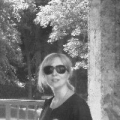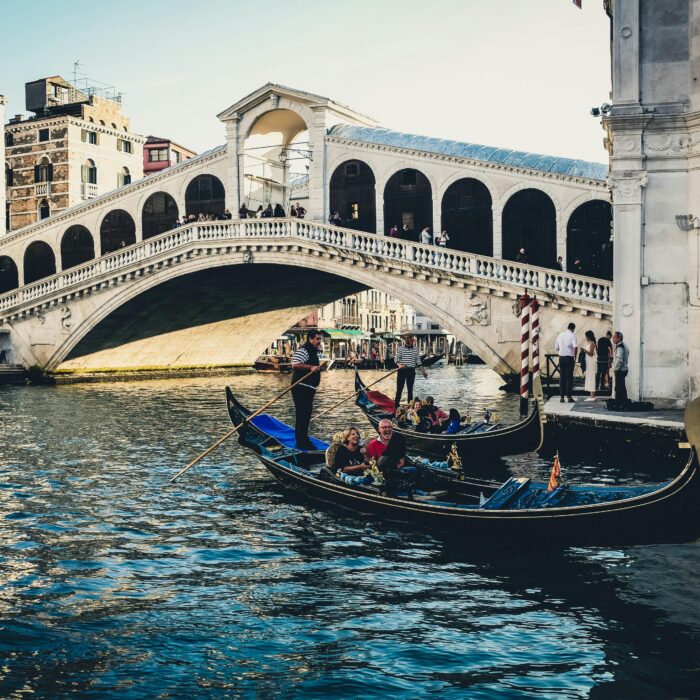You have no items in your cart. Want to get some nice things?
Go shopping
There’s a moment In Stendhal’s Le Rouge et le Noir when Mme de Rênal, in the midst of an adulterous affair with the novel’s hero, remembers her religion and realises she is committing a sin. In agonies of remorse she tries to resist, but she is consumed by her passion for Julien Sorel. Towards the end of the book, she is attending mass, draped in a shawl and praying with fervour, when Julien shoots her.
The novel shows brilliantly the absolute, shady power of church, and the way believers are held in the unforgiving grip of its precepts and restrictions. The church has a palpable effect on the lives of these people, and on how they approach love and sex. Giving in to lust means going through torments as they try, like Mme de Rênal, “to appease a jealous God.”
Are there Londoners today whose lives are as strongly affected by religion as they were in 19th Century France? Is it possible for modern sex lives to be tinged with as much pain and passion, to have the potential for such blood and violence? It is perhaps the lesbian, gay, bisexual and transgender community where such emotions might be looked for today. Heterosexuals have it a little easier – they can more or less gloss over some of their old-fashioned sins. But with new laws for same-sex marriages in the news and religious bodies under pressure to issue unequivocal pronouncements on the issue, the LGBT community in the religious spotlight.
Religious rituals
A recent London news item crystallised the debate. In January this year, masses for gay and lesbian Catholics, which had been celebrated at Our Lady of the Assumption Church in Warwick Street, Soho for six years, were cancelled on the ground of being incompatible with the church’s teachings. The masses are being moved to the Jesuit church at Farm Street, Mayfair, following orders from the new archbishop of Westminster, Vincent Nichols.
For the last mass on 17th February, the church is packed with a mix of people, old and young, English and foreign. Most are conventionally dressed but are were splashes of colour here and there – peroxide blondes, a purple t-shirt with “No one knows I’m a Catholic” inscribed on the back. A late arrival slipps into a pew, wearing, like Mme de Rênal, a headscarf. The scarf comes off, revealing a transvestite whose pale face is enlivened by a dash of crimson lipstick.
The masses attract many musicians. Beautiful hymns and songs flow, voices ringing with faultless clarity. The unusually high number of robed men around the altar adds gravitas to the proceedings. Monsignor Seamus O’Boyle delivers his sermon with calm grace. He talks about the 40 days that Jesus spent in the desert, and his quest for identity as the Son of God, a resonant parallel, in the circumstances.
This is surely what religion should be about – filled with humanity, unafraid of authority, and above all, refusing to judge others. More like Graham Greene’s heroic whisky priest in “The Power and the Glory” and less like General Franco’s handpicked bishops.
At the farewell party afterwards, in a room behind the church, coffee, wine and cakes are offered, candles blown, speeches made. The congregation has travelled from all over England. The mood is sad, but optimistic. Although they regret the move, the attendees hope to settle well in their new church. A woman tells me she believes the struggle is worth it. Things wouldn’t change now but she’s sure they will improve for the next generation.
One of the problems facing Catholic LGBTs is that although homosexuality is supposed to be accepted with compassion, the Vatican expect celibacy for life from gay and lesbian Catholics.
In the comments sections of Catholic online papers, fierce debates about the presumed sexual activity of the congregation rage on. There’s a high dose of curiosity evident. Traditionalists opposed to the gay masses describe how they have seen members of the congregation openly flirt and fondle each other. Others claim to have heard from the attendees themselves that they practise sex.
At the last mass, most of the congregants went forward to take communion, an indication perhaps that they had not sinned and were celibate. The atmosphere is dignified and no one I speak to afterwards mentions sex. I sense a reluctance to disclose anything on the subject. The dilemma is a deeply personal one that congregants each face in their own way.
Coming out
Among Muslims, hard-line interpretations deem homosexuality to be a sin. There is the added problem of coming out in communities that can be strongly traditional and conservative. Fear of violence is a very real factor.
A Muslim bisexual tells me, “When I was younger I worried that if my parents found out they’d kick me out or disown me. They had previously threatened to do so for dating a white British girl at school so it wasn’t hard to believe they would for being bisexual. I also worried about the community in Bangladesh, where I’m from originally, finding out, and about their reactions, including physical violence.”
I ask what is most difficult about balancing his beliefs with his sexuality. He says he regrets not having a better knowledge of Islam, as he can’t refute theological arguments as well as he’d like. He feels scholars who interpret the Quran are already homophobic and that this colours their interpretations, so they go on to spread what he calls their “homophobia-laced Islamic teachings.”
He tells me he believes sexual minorities will become more and more accepted by the Muslim community as more people come out. Indeed, many Muslims online discuss how their religion should be updated to keep in line with the times. Perusing the Koran for more clement interpretations is a common theme in these lively discussions.
Support websites are at hand to try and help these confused believers. Sarbat, a website for LGBT Sikhs, provides discussion forums – one of them is devoted to people searching for partners for marriages of convenience. The offers a platform for London Muslims to chat, while Quests organises local groups and a helpline for Catholics.
The JGLG (the Jewish Gay and Lesbian Group, which has been running for 40 years) also runs a helpline. Ed Teeger, the organisation’s former vice-president, outlines in a personal statement the difficulties linked with coming out in what are often close-knit communities. Calls to the helpline often deal with coming out, problems with mothers, shyness, being young and isolated. “Gay and Jewish means belonging to two minority groups with resulting benefits and disadvantages. There is a lot to celebrate about being both Jewish and LGBT.” He believes in the need to re-interpret texts and laws written over 2,500 years ago and to reflect changes in society.
The call for reinterpretation of sacred texts is a common theme among those concerned with their religion’s attitude to sexuality. Christians refer to Mary Magdalene. Muslim transgenders point to academic works showing that transvestites were accepted in Medina in early Islamic Arabian society. Their first concern is to find scriptural evidence that God had made them as they are and accepts them.
The future for London
In London, the difficulties of balancing religion and an LGBT lifestyle are discussed more openly than elsewhere. But it is still not easy, and the fear of hostility adds to the deeper fear of religious transgression. As for Stendhal’s 19th Century French Catholics, guilt seems an automatic reflex for any believer stirred by sexual feelings.
But for the people from the LGBT community I spoke to, there is hope. Society is becoming increasingly accepting of same sex marriages, and there is a general feeling that the traditionalists will have to change their stance at some point in the near future.
London is at the forefront of this final fight for total acceptance by the most conservative bastions of society. Nowhere is the process more visible than at the after-party for the final Soho mass. Holy men mingle with lesbians, gays, bisexuals and transsexuals. In this context, the sight of a monk in his brown cloth robe seems so archaic that it warranted more of a second glance than the mere sight of lipstick on a man’s lips.

Patricia Duffaud
Patricia Duffaud is a writer of mixed French and Northern Irish origin. She writes short stories, features and reviews and her work has appeared in Wasafiri Magazine, the Puffin Review and Thresholds. One of her stories was highly commended in the Gladstone's library's Mystery Lady short story competition. She is currently non-fiction editor for Litro online.





One comment